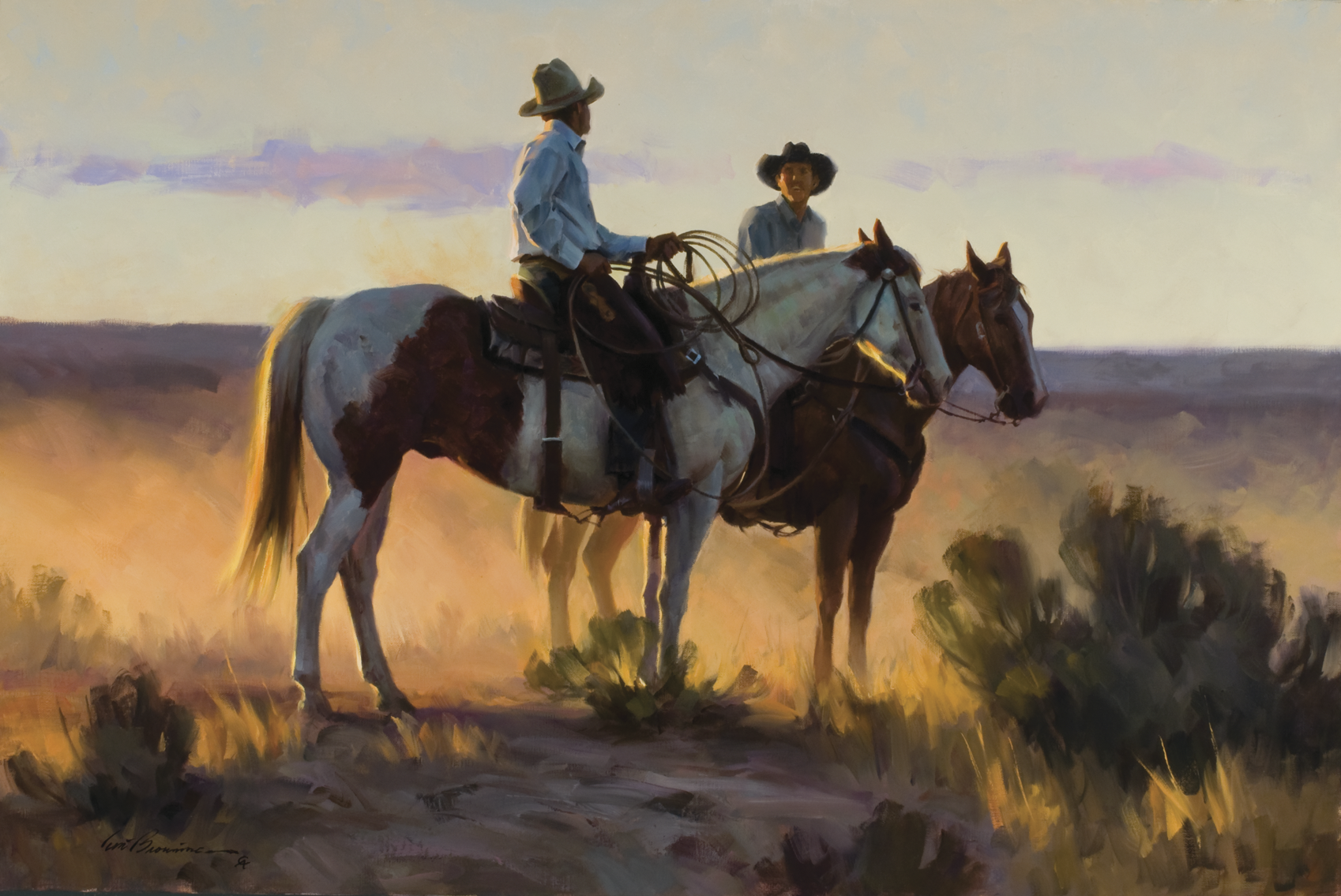
01 Sep Cowboy Impressionism
In the fall of 2009, Meredith Plesko, owner of Insight Gallery in Fredericksburg, Texas, was unpacking a pair of paintings. Plesko, a sixth-generation Texan with long blond hair and a pleasant smile, had recently come back from the Prix de West, the National Cowboy & Western Heritage Museum’s annual award banquet. The Prix de West is essentially the Academy Awards for Western artists, an event that corrals 100 of the world’s best for a weekend of demonstrations, seminars and hobnobbing. The show culminates in the announcement of the Prix de West Purchase Award. That year the winner was a 59-year-old oil painter from Bend, Oregon, and happily Plesko had arranged for him to send her some of his work — the very paintings she was now unpacking. Hardly had Plesko taken the paintings out of their boxes and leaned them against a wall when a couple walked in, took one look at the first painting and said, “We’ll take it.” A week later, the second one was gone.
Some 1,400 miles away in Jackson, Wyoming, Mark Wilcox tells a similar story. Wilcox is the creative director of the Wilcox Gallery, and on the day he describes a new painting had arrived, a sun-infused scene of a cowboy on a horse leading another horse through a stream. In the past Wilcox had sold work by this artist sight unseen, the sale based solely on the strength of an ad in an art magazine, and the day before a piece by the artist had gone out the door to Tony and Melissa Barton of Belgrade, Montana. The Bartons were furnishing a new home, and Wilcox emailed to tell them they needed to look at something that had just come in. Viewing the painting as an email attachment Barton wrote back and told Wilcox to send it along.
When I ask Tom Browning what he thinks of such stories, the instant connection fans and newcomers have to his work, he looks baffled for an instant. Browning is by nature quiet and soft-spoken, and what I sense as a reluctance to brag is not the case at all. Instead, it simply doesn’t occur to him. There is a politeness about Browning from a different era, the era, no doubt, he so diligently paints — the old West — and in keeping with its values he extends me a degree of trust, the rest of which is up to me to earn. Likewise his words are spoken through his teeth in true cowboy fashion, the overall effect being he has just stepped out of one of his own paintings. At 60, Browning is fit and trim with short sandy hair, steady gray eyes and a thick mustache gone partly gray. Dressed in a checked shirt, new blue jeans and cowboy boots, he walks with the beginnings of a stiff-hipped gait, like someone who has spent time in a saddle, which he has. In answer to my question, Browning falls back on the only genuine answer there is: “That’s good,” he says, and we both laugh.
We are downstairs in Browning’s studio. Browning and his wife, Joyce, moved to Bend in 2004 after selling their five-acre ranch in Sisters, Oregon, a small, picturesque town just 30 minutes away. The studio’s north wall is a painterly series of ceiling-high windows, the dusty Western scenes this side of the glass quite in keeping with the high desert views you can find beyond. In the center of the 14- by 20-foot room, a Hughes 4000 easel holds a pair of paintings Browning is working on, and various other works (some finished, others not) are leaned up or scattered about the wood-floored room. Browning will work on a number of pieces at the same time, one painting often sparking an idea for another of a similar theme. True to his roots, a leather saddle takes up a prominent space near the back wall and at least three cowboy hats can be seen; one black, one white and one cream-colored and severely sweat-stained. The entire space has a serene, almost religious feel to it and is noticeably lacking in clutter; all traits, it must be noted, which Browning carries over into his paintings.
Browning sits upright in his chair and takes a sip of coffee. “Light is the most important element of a painting for me,” he says. “To get a scene that looks convincing the light has to be right.” Browning’s paintings are, of course, noted for their light, often seen falling with a deft softness on the shoulders of a cowboy at round-up, or floating nimbuslike, filtering through a cloud of dust kicked up by horses. In such work, Browning says, it is not the cowboy or the horse or even the dust that is the subject of the painting, but the light.
Meredith Plesko of Insight Gallery knows firsthand light is indeed what “makes” Browning’s paintings. “Clients walk into the gallery,” she says, “and see the work and almost always comment, ‘Wow, he has a phenomenal way of capturing light.’”
Mark Wilcox of the Wilcox Gallery hears the same thing. “People see Tom’s paintings and say, ‘Ah the light in that is really incredible.’ And that’s why people walk out the door with Browning paintings all the time.” Wilcox also points out Browning’s ability to render horses convincingly. “I have people all the time,” he says, “just constantly saying how he knows how to paint horses. And these are people who ride horses, that raise horses, that have horses.”
Browning grew up around animals, including horses, and at a very young age began to draw. This was Ontario, Oregon, hardly SoHo, a small city in extreme eastern Oregon. “I drew horses and animals,” Browning says, “because that’s what was around.” Right from the start Browning knew he wanted to “create,” but it wasn’t until he was in art school at the University of Oregon and on a summer trip to Montana that the whole Western theme took hold. On that trip he was exposed to the work of Charlie Russell, in particular, When the Land Belonged to God, and his life would never be the same.
As the years progressed so did Browning. He painted portraiture, still lifes, plein air and landscapes. There was the famous stint of painting Santa Clauses, a strange period for Browning, wanting to keep his commercial reputation separate from his fine art reputation. Still, no matter what he did or what he painted he always gravitated back to the Western theme. “There’s nothing about today’s T-shirts and jeans that interest me,” he says. “There’s nothing about modern times that has piqued my interest artistically.”
Artistically, Browning considers himself halfway between an Impressionist and a Realist. “I don’t paint with a lot of detail,” he says. “Too much detail can be a distraction.” By way of example Browning points to a painting of a man sitting a horse with his back to the viewer. In it the rocks in the foreground and background are recognizable but noticeably lacking in detail. “Needless information,” he calls it. By leaving out such detail Browning understands the viewer’s eye will naturally be drawn to the focal point of the picture — the cowboy — while the mind, a subconscious treasure trove, will fill in the rest. In this way the viewer “participates” in the painting, which is exactly what Browning wants. “The Impressionists knew what they were doing,” Browning says, “when they started letting the eye mix the colors on the canvas instead of mixing them on the palette first.”
The colors Browning has mixed (and not mixed) have earned him high praise among Western artists, and in October of 2009 that praise was made official. On his first attempt, and after only 30 minutes deliberation by the committee, Browning was elected into the Cowboy Artists of America (CAA), “An honor,” he says, simply and honestly put. Only a few months before Browning had been singled out in a room full of his peers as the winner of the Prix de West Purchase Award, an award that simply and honestly shocked him. Having had a year to digest its significance, what he says to me in his studio is, “It’s what you work your whole life for.”
The piece that won the Prix de West is titled The Dawn Of A New Day, and now hangs permanently in the National Cowboy & Western Heritage Museum. Museum President and Executive Director, Chuck Schroeder, describes the painting as, “A piece that is not only exceptionally rendered artistically, but it also tells a great story.” Schroeder speaks with a combination of admiration and awe when he says, “You can read into that work the anticipation of a ranch wife and all her concerns about family and the ranch and weather and all those things that go into the Western lifestyle.”
The Dawn Of A New Day grew out of a workshop Browning taught showing students how to light a scene and use a model. After returning home he remembers going through some of the photographs and seeing one he thought had potential. First he painted it as a small 9- by 12-inch piece, but elements of the painting intrigued him and “warranted something larger.” He ended up painting the scene three times, each time enlarging it, adding and taking out elements, until it was 50 by 32 inches. Browning walks me over to a print of the painting. It hangs at the entrance to the studio. Looking at it it’s hard not feel you have intruded on a private moment, somehow walked in on someone who doesn’t know you are there.
This idea of Browning as a storyteller is an interesting one, most notably because Browning doesn’t see himself that way at all. “What I do is capture a single moment in time,” he says, “an instant.” Instead of a viewer teasing a narrative out of a painting by looking at it longer and longer, Browning is shooting for an impact akin to “the visual effect you have when you close your eyes and open them again.” Browning will paint a cowboy riding down a calf and about to lasso it, or stopped on his horse gazing out over a plain. These are not stories, but snapshots, moments from a bygone time frozen in time.
Browning paints his snapshots from actual snapshots, photographs and sometimes series of photographs. He will use models and have costumes made and then set up a scene, miles away in the desert if needed, so he can “see” what he has already imagined. One of his most ambitious projects to date, oddly, is not a Western scene at all but a commissioned triptych for Saint Mary’s Church in Boise, Idaho. It employed 20 models, all in religious costume, and was on a scale he had never attempted.
Father Tom Faucher was Browning’s priest in Sisters. When Faucher moved to Boise he asked Browning to do a large triptych, 10 by 16 feet, that would hang above the altar. Faucher wanted 18 religious women from various time periods, with the Virgin Mary and baby Jesus in the center. The rest, he said, was up to Browning.
Browning had never worked on something that large and admits to being a bit daunted. To get started he contacted a costume designer in California and brought in models one at a time to photograph. Next he set up scaffolding in his studio and stretched canvas. Once he got painting he found it went quickly. “I really enjoyed it,” he says. “I got to the point where I really enjoyed painting with big brushes, painting with my whole arm.” The result, The Adoration of the Christ Child, was beyond what even Father Faucher had hoped for. “It is an incredibly spectacular painting,” Faucher says. “Everyone who sees it is just awe-struck.” Faucher goes on to say it is a stronger Madonna than the Renaissance paintings of Mary and Jesus by the great medieval and Renaissance artists,” while Browning (as might be expected) prefers to downplay the painting, calling it merely, “the crowning work of my life.”
Despite all of Browning’s achievements and recent awards, he is not content to rest on his laurels. Browning knows people are looking at his art closer than ever, and as ever, he is striving to improve. “I’m taking longer on the paintings than I did in the past,” Browning says, “to get another 20 percent out of them in quality. … It’s important to me at 60 years old to try and improve.” Chuck Schroeder of the CAA knows this is Browning to a ‘T’ and says of Browning, “I think as great as he is today we have not yet seen what he is capable of.”
It is time for me to leave, but before I do I ask Browning how he would like his paintings to be remembered — and I should have known the answer. “That they were all nice pictures,” he says. Browning walks me to the door. It is a Saturday morning in June. We stand on his front porch and shake hands. “The daily task,” he has told me, “is to make an honest picture.” All around us the honest sunlight pours down on the high desert and saturates everything.
- “Bunched Up” | Oil | 22 x 36 inches
- “Adoration of the Christ Child” | Oil | 10 x 16 feet
- “In the Circle” | Oil | 24 x 18 inches
- “The Dawn of a New Day” | Oil | 50 x 32 inches
- “Out of the Brush” | Oil | 20 x 40 inches







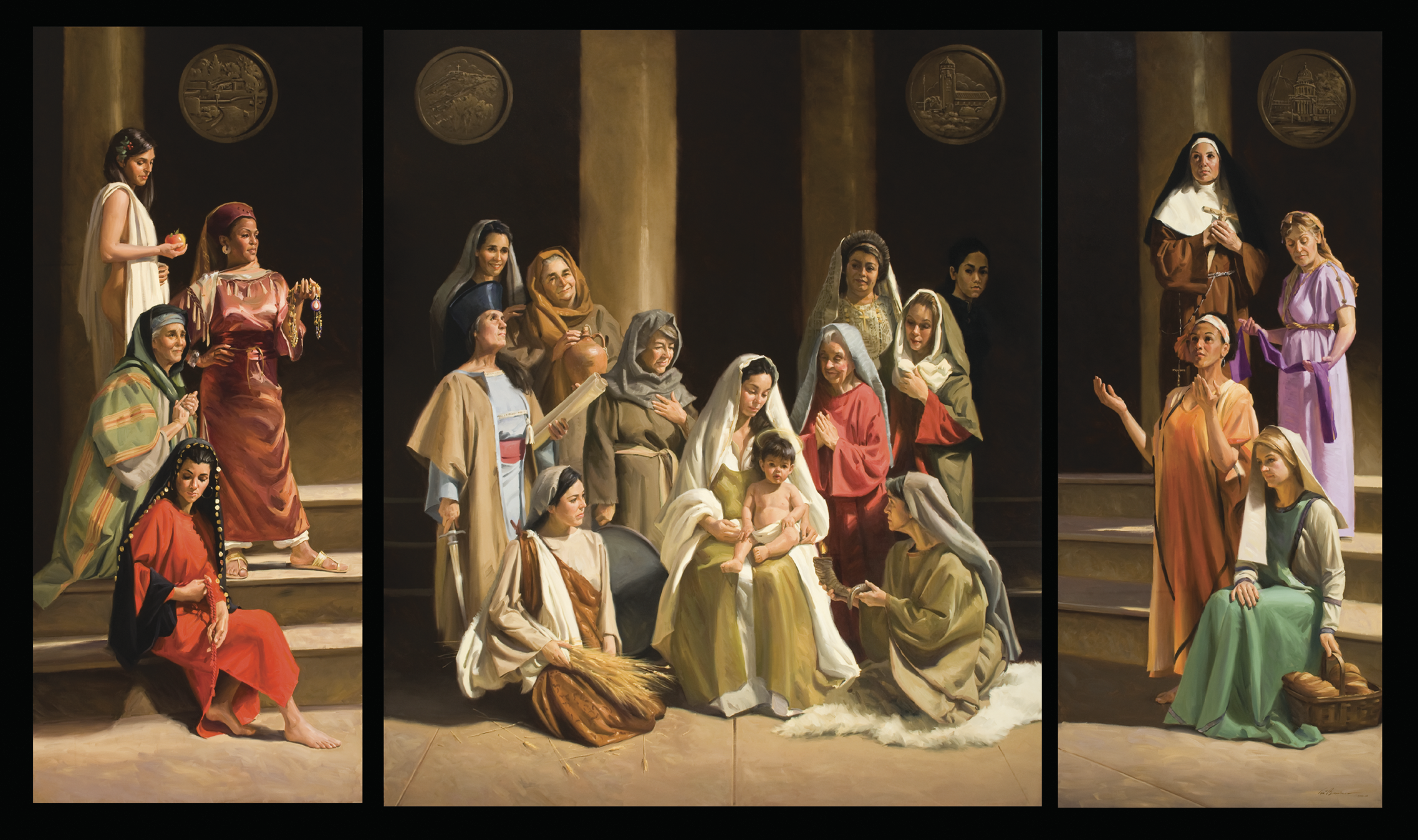
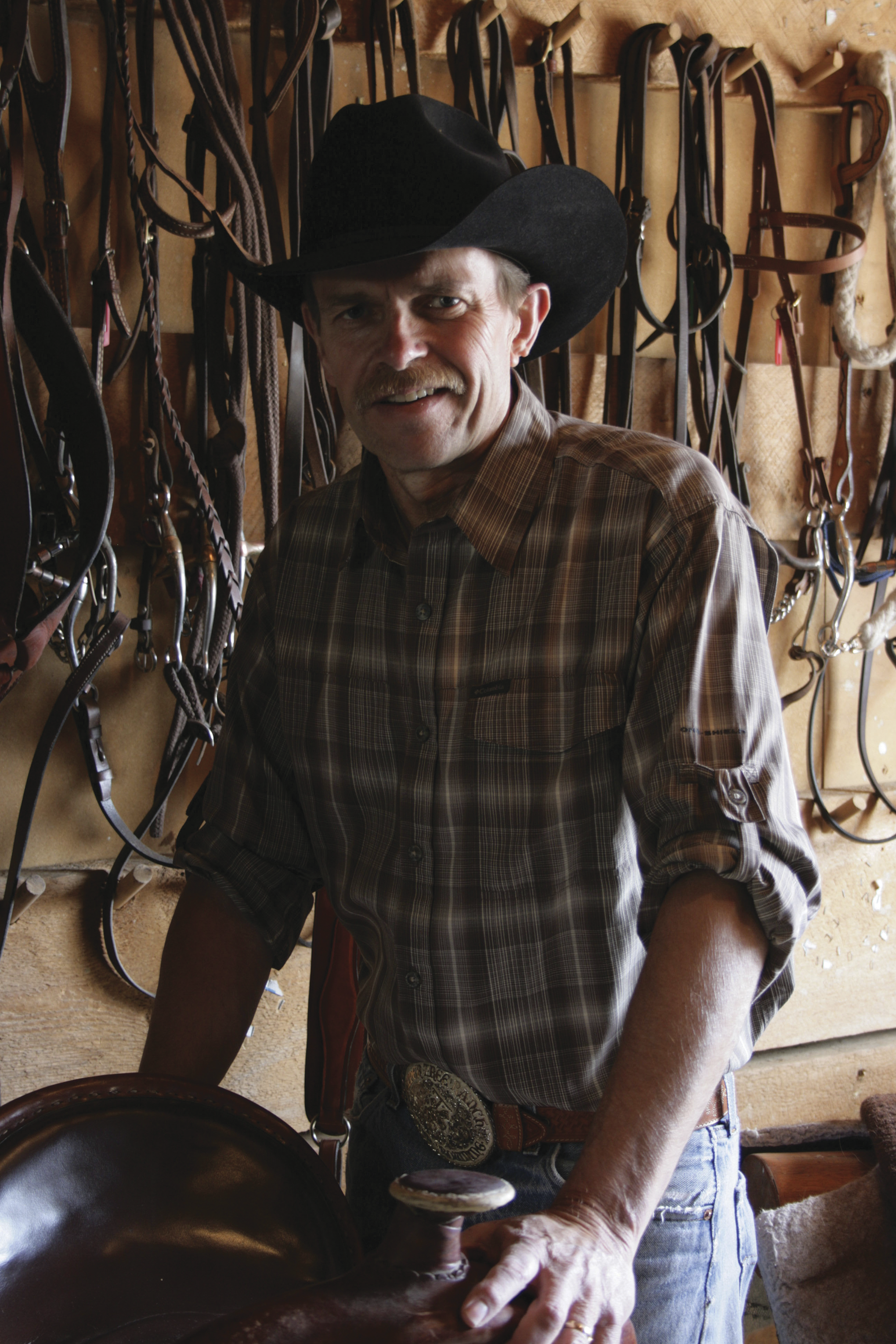
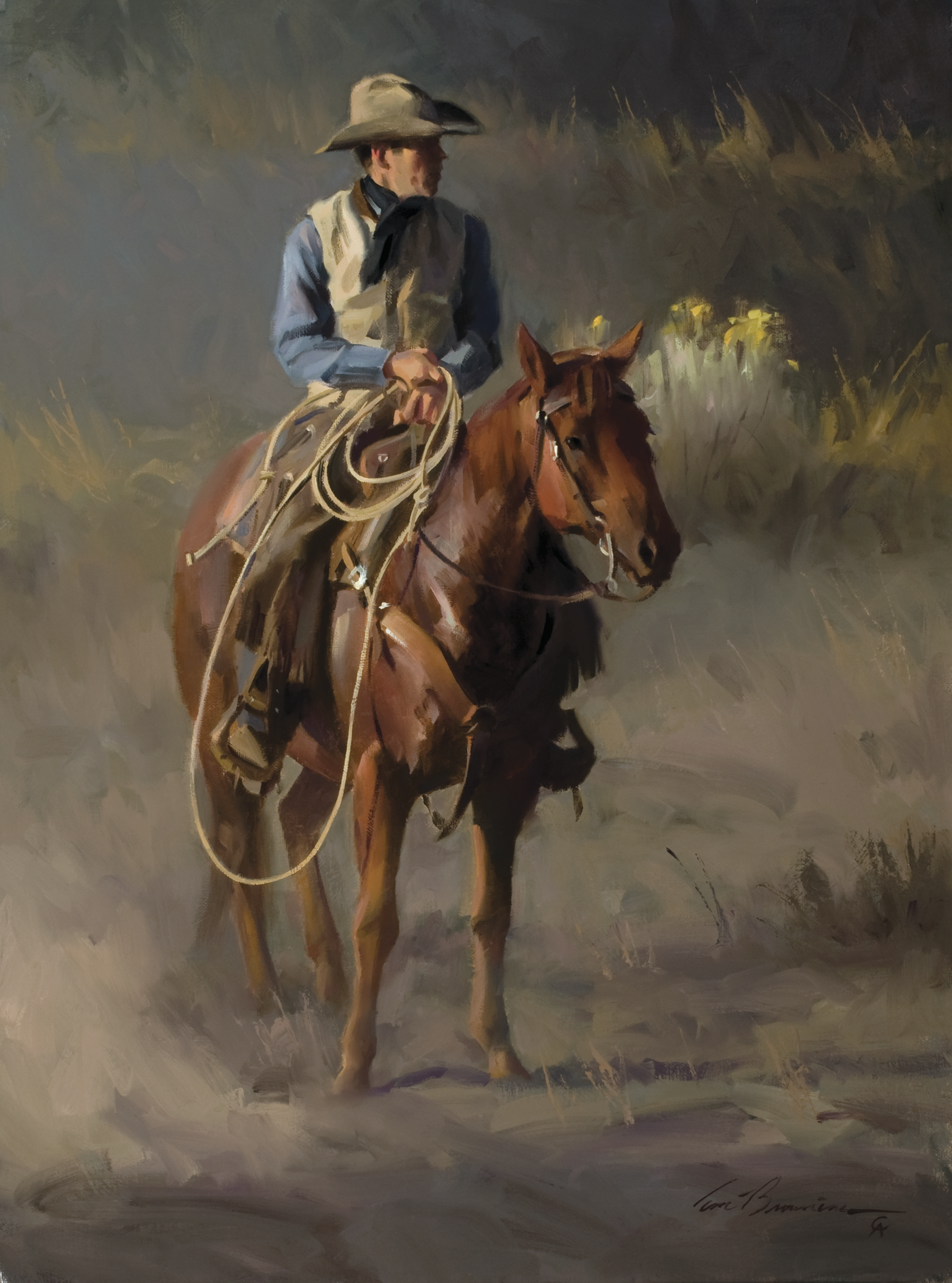
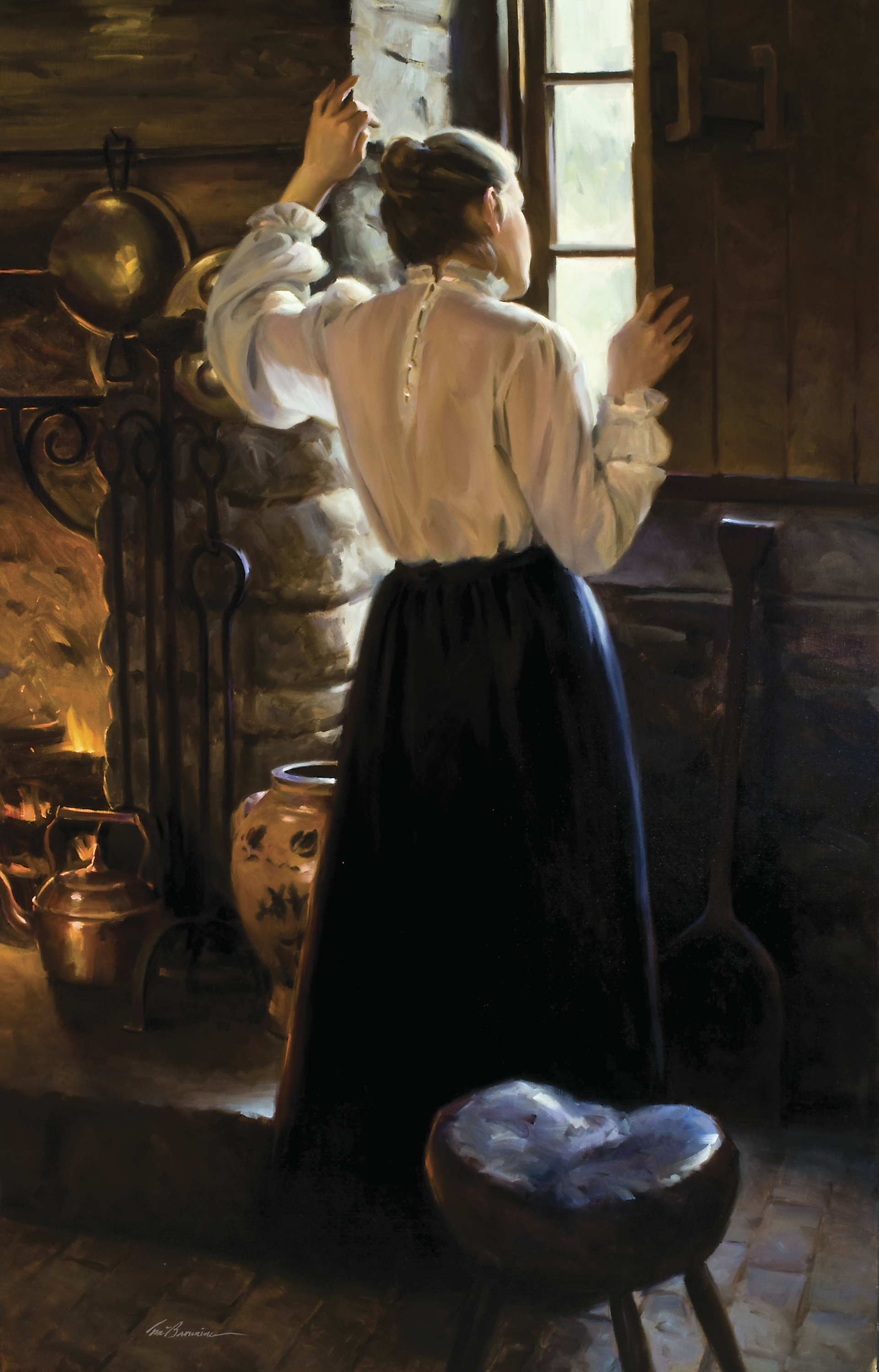
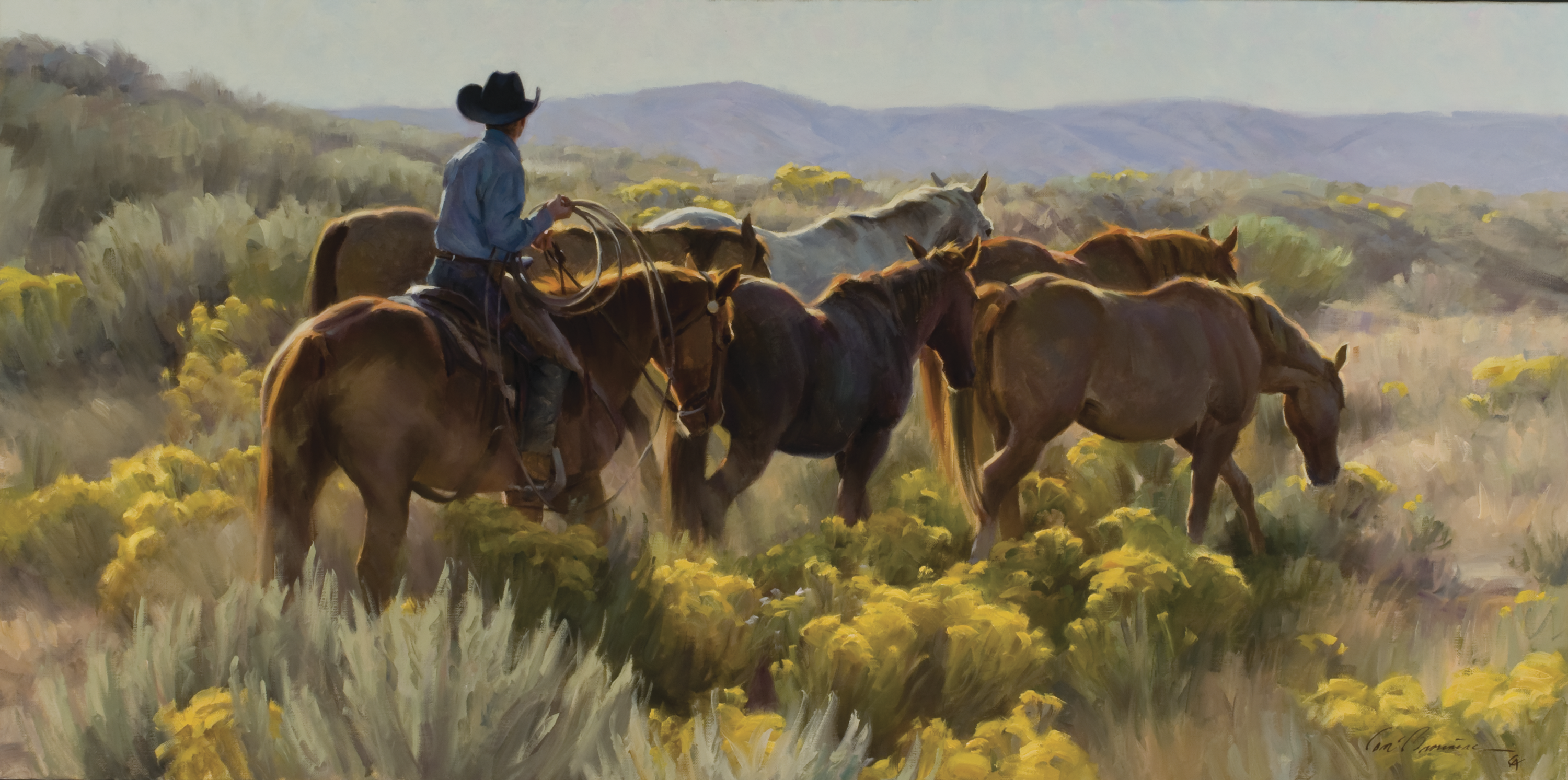
No Comments